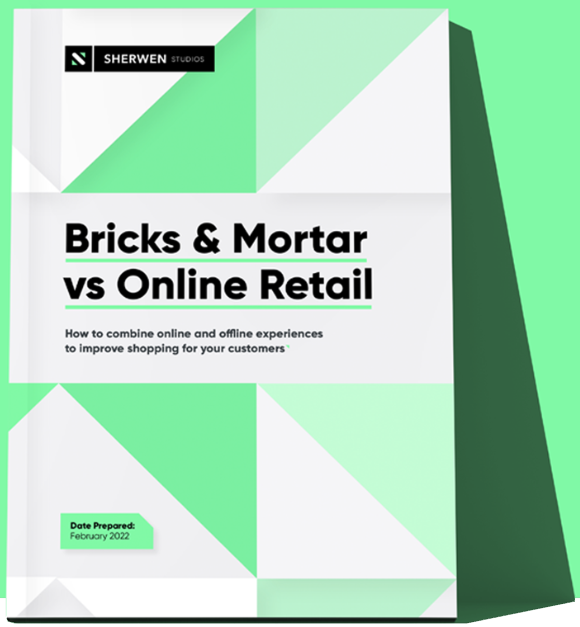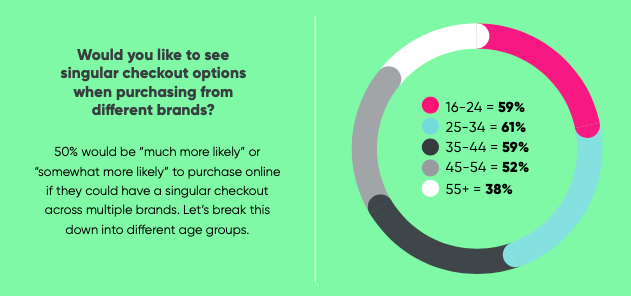The most important part of the sales funnel is the checkout process. This is when you convert potential customers into paying customers. Despite its crucial role within sales, too many retailers neglect to ensure that shoppers experience a quick and easy checkout journey in-store or online.
The most important part of the sales funnel is the checkout process. This is when you convert potential customers into paying customers. Yet, despite its vital role in sales, too many retailers neglect to ensure that shoppers benefit from a quick and easy checkout experience.
Complex checkouts on a website can cause shoppers to walk away, and lengthy queues are the biggest bugbears for shoppers in-store.
What can a retailer do to improve the checkout process?
Firstly, it's important to replicate your payment options online and in-store. Today's younger generations are increasingly using payment options such as Google Pay, Apple Pay, PayPal, Klarna, and Clear Pay. More customers than ever before want the benefit of buy now, pay later options without resorting to credit card debts.
Many retailers offer these payment options on their websites but, haven't yet updated their systems to provide similar payment plans in-store. Four in ten shoppers would be "much more likely" or "somewhat more likely" to make a purchase in-store if these payment options were in place (rising to five in ten shoppers aged 16-24 and 25-34).
28% of shoppers have gone through the entire shopping journey online, only to walk away from the transaction due to a complicated checkout process.
Bricks & Mortar vs Online Retail: How to combine online & offline experiences to improve shopping for your customers, Sherwen Studios White Paper
Secondly, you may want to consider your use of technology as part of your in-store checkout processes. Many retailers are increasingly using technology to streamline the checkout process. The growing use of self-service checkouts means that customers are used to serving themselves at the checkout, but there are other ways of using tech to enhance your in-store checkout. For example, if you offer loyalty points on your website, you could create a checkout system that adds in-store purchases to your tally.
What if you could use your infrastructure to provide added value to shoppers?

Complex checkouts are by far the biggest reason shoppers walk away without purchasing the items they require. This is true both online and in-store.
Retailers need to look closely at their systems to establish quick and easy ways for customers to complete their transactions. For example, one-click checkouts (as patented by Amazon) are a proven way to improve conversions because shoppers do not need to insert their delivery details and credit card information repeatedly. This speeds up the process and enhances conversions amongst impulse purchases.
We believe that retailers need to pay close attention to UX data that confirms how shoppers behave on your online platform. For example, if customers are dropping out of the sales funnel during the checkout process, you need to be clear about the reasons why. Perhaps it's because you haven't integrated the right payment options they are looking for. Maybe they want to avoid logging in, and they simply want a 'guest checkout' option. They might be surprised to find expensive delivery charges.
Once you've identified the root cause of the complex checkout, you can make informed changes to improve your conversions and prevent your customers from walking away.
19% of shoppers believe that in-store shopping is missing the ability to buy now, pay later.
Bricks & Mortar vs Online Retail: How to combine online & offline experiences to improve shopping for your customers, Sherwen Studios White Paper
The implementation of singular checkouts for multiple brands
Today's online retail has shifted. Many retailers choose to fulfill items directly from their stores rather than a central warehouse. This is an effective fulfillment method, but some shoppers find it frustrating to receive multiple packages from one singular order. Today's eco-conscious shoppers may also be concerned about the impact that multiple parcels may have on the environment.

Another frustration for shoppers is knowing that many of their favourite brands are collectively owned by the same parent company. As a result, they may be prevented from purchasing from one retailer because they've recently purchased elsewhere, and they don't to have to pay multiple delivery charges.
The enduring popularity of shopping centres is that shoppers can pay one singular car parking charge and shop across multiple stores. Therefore, can we learn from this and create something similar online? For example, if your brand is owned by a parent company and has sister companies that target the same demographic, perhaps a singular checkout across multiple brands could be enough to encourage shoppers to complete their transaction.
To read more about how retailers can align their online & offline shopping experiences and improve their checkout process, please read our Retail Whitepaper.
